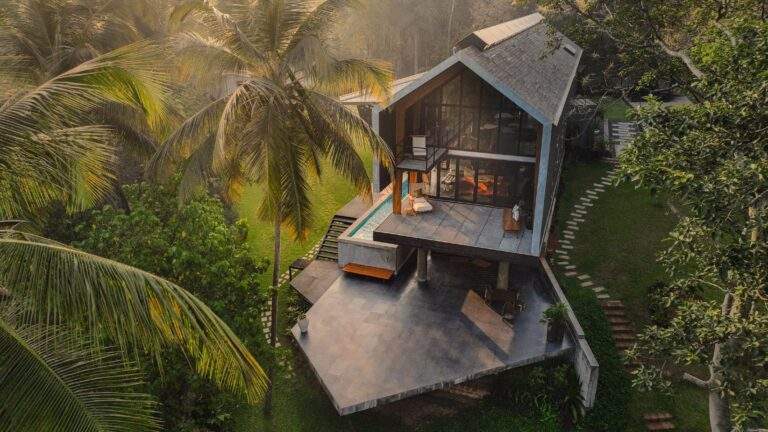How to Distribute Space for a Study Area on a Campus
How to Distribute Space for a Study Area on a Campus
Students are supposed to receive the greatest education possible on college campuses. Yet, a study and relaxation space is still a necessity for many colleges, universities, and other educational institutions. This space is used by students to read, study, and unwind with friends. Also, it’s a great method for children to interact with one another in a secure setting, which boosts their confidence. But how do we go about making one? On how to manage that and allot your space, we offer some advice. Continue reading!
How should the space be set up?
It can be difficult to plan a study and recreation space on campus.
You must develop strategies to establish a welcoming environment that promotes learning and sociability while taking the needs of both students and faculty into account. Every small aspect must be considered, including placement, whether it is outside or inside the structure, size, uses, and versatility.
listing the area’s objectives
It’s important to think about how each region may effectively fulfill its function while allocating space for various activities.
Consider setting up a single large room with tables and chairs organized around a podium if you intend to host group study sessions or lectures. On the other hand, depending on the size of your party, multiple smaller rooms with fewer chairs in each might be more appropriate, according to Top Writing Reviews, a company that publishes reviews of writing services.
Make a space designated just for leisure pursuits, such as board games or sporting goods. In order for people to quickly and easily visit this location, make sure that it is accessible from other areas of the building.
Provide private spaces with desks or tables for each user to utilize independently if you want to promote independent study. A cozy lounge room might be created so that students can unwind and take a break from their studies.
selecting a place
This could appear in a variety of ways depending on the surroundings at your school, including outside or inside the structure, with or without plants, to mention a few! Yet having spaces set aside for students to unwind, interact, and study outside of the classroom will be advantageous for everyone on campus, regardless of how you choose to go about it.
To get the best outcome for everyone, take into account the size and climate of your institution. Consider adding plants or playground grass made of soft XP fibers to an indoor location like the library or student center if a large outdoor space is not accessible. Here are some tips about plants. This would give pupils a peaceful, natural setting in which to study or unwind after class.
estimating the size
Spaces of many sizes and shapes, from expansive lecture halls to private study rooms, can be employed. As a result, you must choose the appropriate size for each section based on how frequently it will be used.
When planning the layout, take into account how many kids will be using a certain space.
For instance, when designing a study area, decide how many teak desks, chairs, or backless benches you’ll need for seating, as well as any other features like whiteboards or bookcases.
dividing into zones with many uses
The most popular zoning method is designating distinct study and recreation areas. This implies that specific portions of the campus would be reserved exclusively for students who wish to benefit from more private study locations and public gathering places for friends or groups. Students can easily locate the location for the activity because to the school’s zoning system, which also promotes an ordered way of accessing the campus.
To identify or adjust the desired area, you can go to marketplaces with lots of free CAD drawings. You will discover ideas, inspiration, and advice from the top designers. You can also assign this assignment to skilled professionals if you need someone to make a drawing specifically for you.
Make the location practical
It’s crucial to consider how traffic will move through the area. People should be able to go from one location to another without difficulty or feeling cut off from any activity. In order to ensure that everyone can enjoy their time in the study and recreational spaces on campus, pathways must be designed and obstacles must be avoided.
Students who might otherwise feel alone while studying all day long will benefit from the ambiance generated by having a space where they can hang out with one another in order to assist alleviate stress and anxiety.
Considering lighting
Another crucial component in planning any area is lighting. To foster a nice atmosphere and aid pupils in their ability to concentrate, it is crucial to make sure the room is well-lit. To accomplish this, take into account both natural and artificial lighting depending on the location.
Taking materials and colors into account.
Colors and materials are important factors in determining how much space is allocated for study and recreational spaces on campus.
Using warmer hues like reds and oranges for recreational areas or cooler hues like blues and greens for study spaces might imply diverse functions for a given location.
When allocating space, things like comfy chairs and tables should also be taken into account because they may make a world of difference for people who are studying or taking a break. In addition, it’s crucial to pick strong and long-lasting materials so no one needs to replace them regularly.
How to select them?
Here are some suggestions for choosing colors and materials for your campus in order to maximize the space:
Employ energetic and vibrant hues, such as bright ones. Vibrant colors make a space feel welcoming and tempt students to stay there longer.
Select materials that are space-efficient and strong while yet being lightweight. Opt for items that are portable, such as light furniture or foldable tables.
Think about utilizing earthy tones and pastels as well as other hues that complement the surrounding surroundings. It can be easier to create a calm environment for learning and relaxing if you use colors that blend into their surroundings.
Choose materials that are simple to clean so that spills and other accidents can be cleaned up right away.
And who has the necessary skills to design the space?
Do you need to make room for studies and recreational activities on campus? It only a few straightforward actions to accomplish this.
Each student who wishes to reserve a spot in the campus study and leisure area must first complete an application, which is available online or at the school office.
After the form has been completed, it should be sent to the appropriate department. This will review it and either approve/deny the request depending on the amount of space available and other circumstances.
The student will be given a confirmation number after being accepted, which they can use to enter and reserve their preferred space. Students should check the specifics before making a booking. Because there can be limitations on who is allowed to use certain locations.
Students can use their designated space in the study and recreation area once all the appropriate processes have been taken.
You may simply construct a welcoming study and recreation area on your campus that serves both students and faculty by using the advice in this article.
More on INJ Architects:






